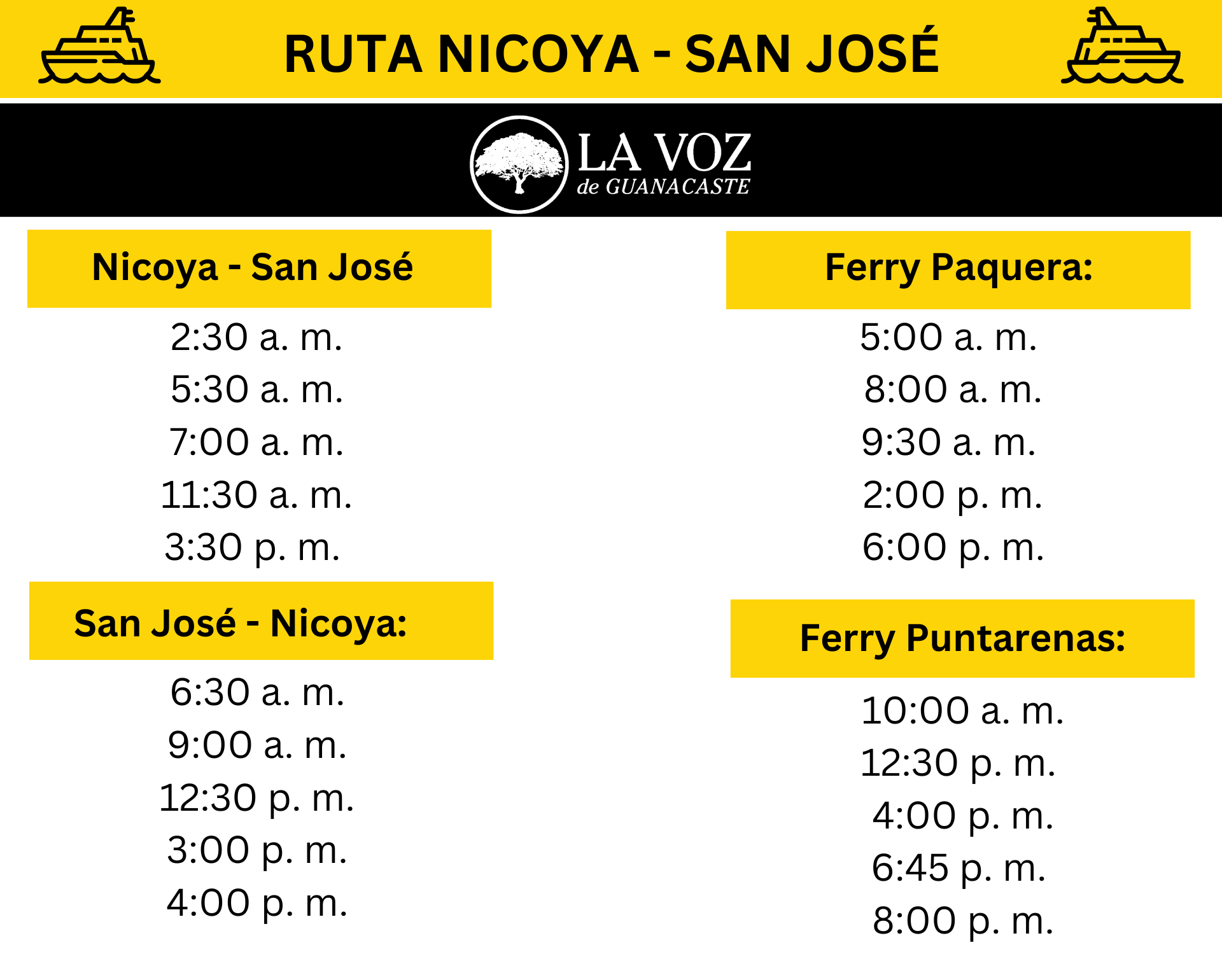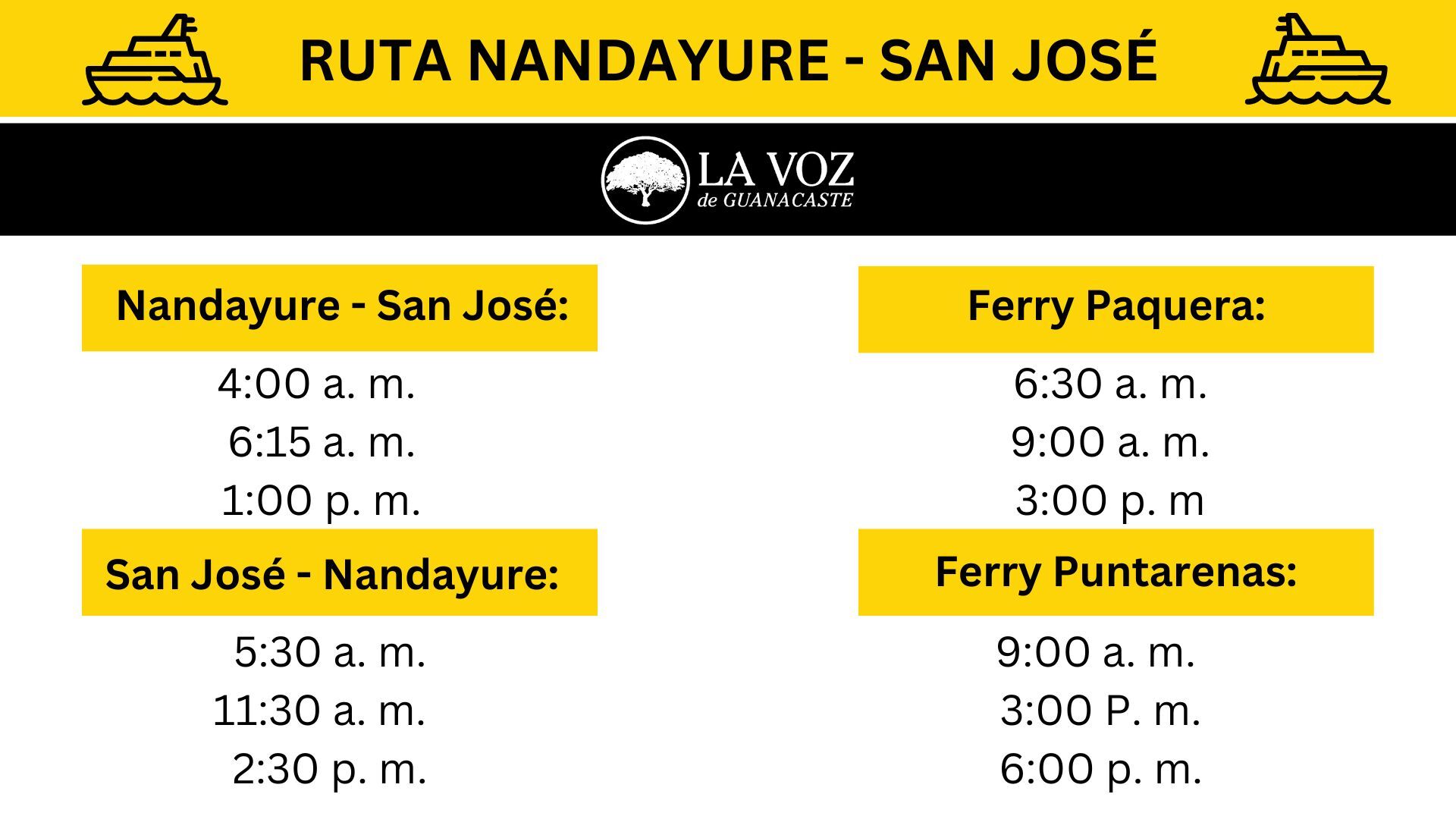
The Board of Directors of the Public Transportation Council (Spanish acronym: CTP) notified the bus companies that travel between San José and the cantons of Nicoya, Hojancha, Nandayure, Jicaral (Cóbano) and Ortega y Bolsón (Santa Cruz) that they will have to make their trips using the Puntarenas ferries while La Amistad bridge is closed for repairs.
The CTP made the decision on March 8, but the bus companies were not notified until Wednesday, March 13 in a letter, of which The Voice has a copy. It took the companies Transportes Ryozumo and Transporte Inteligente de Guanacaste (TIG) by surprise.
Bus drivers won’t be authorized to make stops other than the ones already authorized
The Voice consulted the CTP for details about this decision, but the press department responded via email that the director of the CTP’s Board of Directors, Freddy Carvajal, won’t comment on the subject yet.
The Ministry of Public Works and Transportation (MOPT) won’t provide explanations until the beginning of next week, they added in the response.
Due to the decisión, Ryozumo company plans to file an appeal, and TIG intends to ask for further explanations about who will be responsible for the costs of using the ferry, their representatives said.
The Transportation Intendant of the Public Services Regulatory Authority (Aresep), Edward Araya, told La Voz that with the ferry route, bus companies and bus users will be responsible for ferry ticket fares, that range from $40 to $49 for buses and between $1.5 and $2 for passengers.
Both complain that the CTP did not consult them prior to the decision.
We’re very concerned for several reasons,” said Óscar Alfaro of TIG. “As much as we want to harmonize two transportation systems, it’s not that simple, and travel times are longer. In addition, the CTP agreement isn’t clear about who will assume those costs either,” he added.
Alfaro stated that although the costs of traveling between Nicoya and San José via Liberia or via ferry are similar, they prefer to use the route through Liberia.
In the case of Ryozumo, although they had planned to use the ferry, they question two points. First, the route they will have to follow forces them to leave Nandayure, leaving out passengers from Loma Bonita, Barra Honda, Quebrada Honda, San Juan and Pueblo Viejo of Nicoya, communities that they currently travel through with their route.
According to the company’s administrator, Ricardo Zúñiga Sanchún, it would be more useful for customers if the bus departs from Loma Bonita and heads towards Nandayure from there.
On the other hand, the CTP guideline indicates that they must use the Paquera ferry instead of the Naranjo beach ferry, which forces them to travel 26 more kilometers (16 miles).
We’re surprised by the decision. We don’t understand what they intend with that,” questioned Zúñiga Sanchún. “We’re going to file an appeal within five business days because we don’t agree,” he added.
Aresep also confirmed that no company has requested a rate adjustment due to the changes in routes and lengths of the routes. In addition, it considers that “it would not be reasonable to do so” only for the three months that the La Amistad bridge will remain closed.
“There are no legal mechanisms to adjust fares on a transitory basis and in case of making a fare adjustment, it has an average duration of three months, therefore, it would not be reasonable to do so”, said Araya.
The routes between San Jose and Flamingo Beach and Tamarindo will make the journeys heading towards Liberia and afterwards towards Limonal, where they’ll continue with the usual route.
However, MOPT has not yet officially announced the public transportation alternatives that will be available for those who travel across the bridge on a daily basis for medical reasons, to study or to work, for example.
MOPT intends for the trips to be directed toward students and people who need to cross La Amistad bridge for work.
New routes, new schedules
The decision to use the ferries also involves changes in the bus route schedules, as detailed by the CTP in the letter sent to the bus companies.
However, at the end of last month, the bus company Coonatramar had requested modifications to its authorized schedules from MOPT’s Maritime Port Division to increase the number of routes per day, Miguel Vega, Coonatramar’s communication manager, explained to The Voice.
If the alterations are approved, that could modify the changes already established by the CTP.
Below are the planned schedules, as well as the corresponding ferry.













Comments